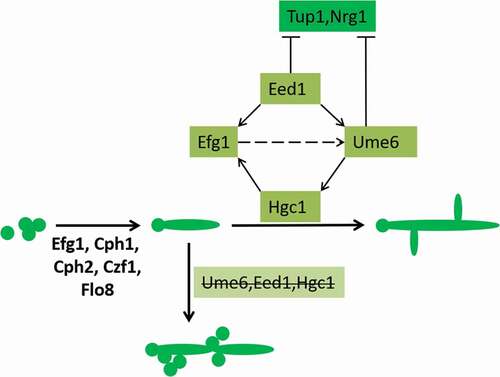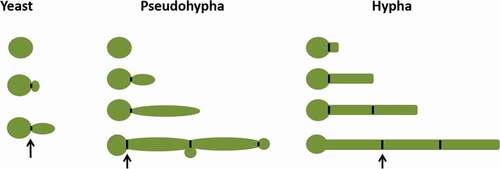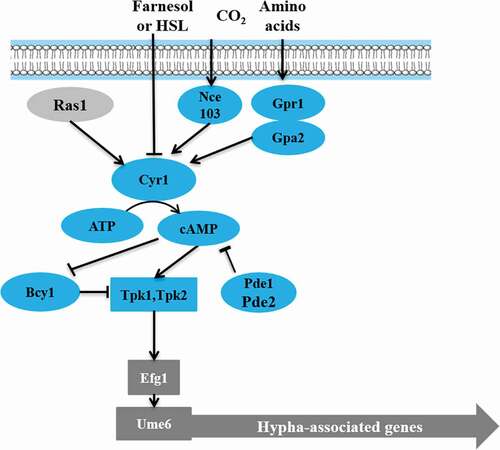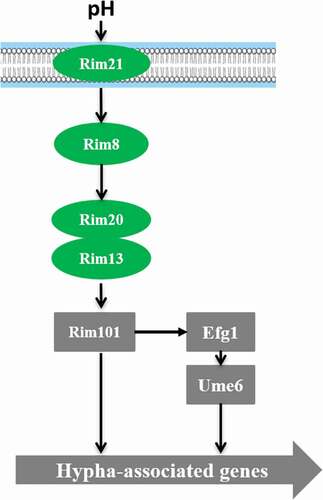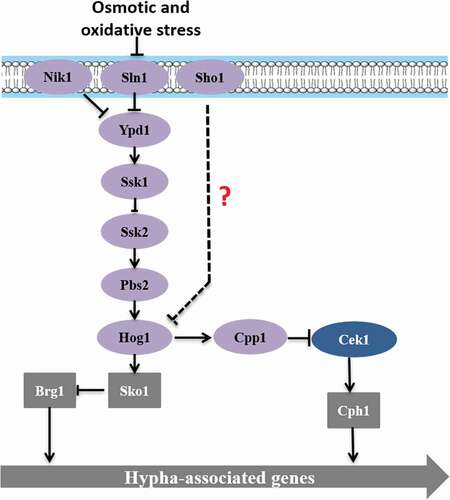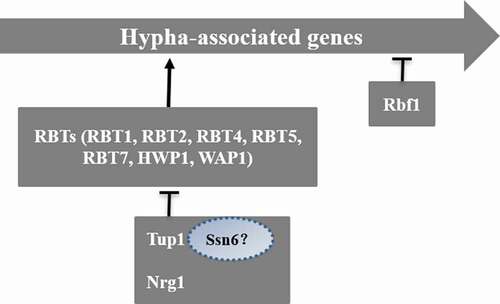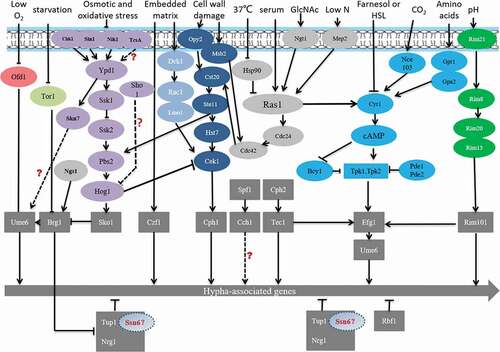Figures & data
Figure 2. Cek MAPK pathway. The Cek1 mitogen-activated protein kinase pathway (MAPK pathway, dark blue) is induced by the embedded matrix environment (light blue), cell wall damage (dark blue), and low nitrogen (gray) and eventually leads to mycelium formation via the phosphorylation of transcription factor Cph1, Ace2
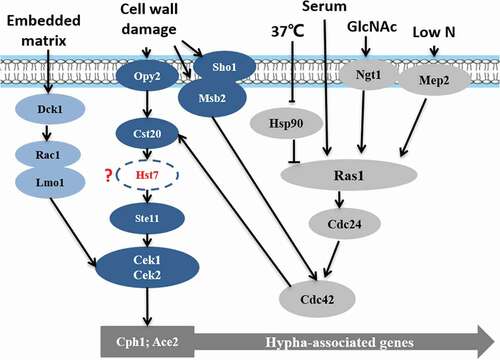
Figure 7. Key factors of mycelial elongation. Transcription factors such as Efg1 and Cph1 are involved in this regulation process. Eed1, Hgc1, Ume6 play key roles in mycelial elongation. Ume6 and Eed1 also negatively regulate Tup1 and Nrg1
